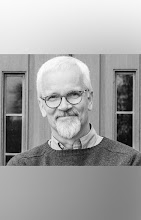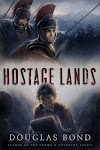 |
| Forthcoming new biography |
Here is an excerpt from the opening chapter:
“Siamo perduti!” The cry echoed off the marble statues
and fine stonework of the streets and plazas of Florence, Italy. “We are
ruined!” What Florentines feared had come upon them. It was September 21, 1494
and the birthplace of the Renaissance was paralyzed with dread. Greedy for
blood, the army of the king of France had crossed the Alps and was on the march
to Florence. In a matter of days Charles VIII’s soldiers would be thundering at
the gates of the city.
"The
expedition of Charles VIII into Italy," wrote Edward Gibbon, "changed
the face of Europe." In those gut-wrenching days, Florentine mothers and
children cared little for what happened to the face of Europe. But they were horrified
for their own lives. In despair, they crowded into the cathedral church of
Santa Maria del Fiore, long-awaited innovation of the architectural genius, Filippo Brunelleschi (1377-1446). The
Duomo had become the virtual symbol of the Renaissance. Since its completion in
1436, the cathedral’s dome remains the largest masonry dome in the world, the
grand marvel not only of the city but of the entire cultural movement. One awed
contemporary said the Duomo was "vast enough to cover the entire Tuscan
population with its shadow."
With lecherous French soldiers slavering at her gates,
terrified Florentines sought refuge under that vast dome. They had gathered to
hear the prior of San Marco, the fiery preacher who had expelled the Medicis
and their tyrannies. That man was Girolamo Savonarola (1452-1498).
When Savonarola ascended the high pulpit, his
congregation—numb with fear—longed for some words of comfort from his lips. He
looked out on their upturned faces. “For behold, I will bring a flood of waters
upon the earth,” the Dominican friar gave out his text, “to destroy all flesh”
(Genesis 6:17). The somber manner in which he read the sacred words sent a
shudder through every man, woman, and child that stood before him. Eyewitness
to the sermon, philosopher Pico della Mirandola said that Savonarola’s
terrifying words made his hair to stand on end. And with the preacher’s every
word, the French army came on to their destruction—just as he had prophesied.
SAVONAROLA’S WORLD
Savonarola’s world reads like the guest list at a royal
banquet, a veritable who’s who of celebrated personages. He breathed the air of
the famous and the infamous, the notable and the notorious, the gifted and the
great.
Born in Ferrara in 1452, he shared a birth year with Renaissance artist Leonardo da Vinci. As Savonarola’s mother labored to deliver her son...



























No comments:
Post a Comment